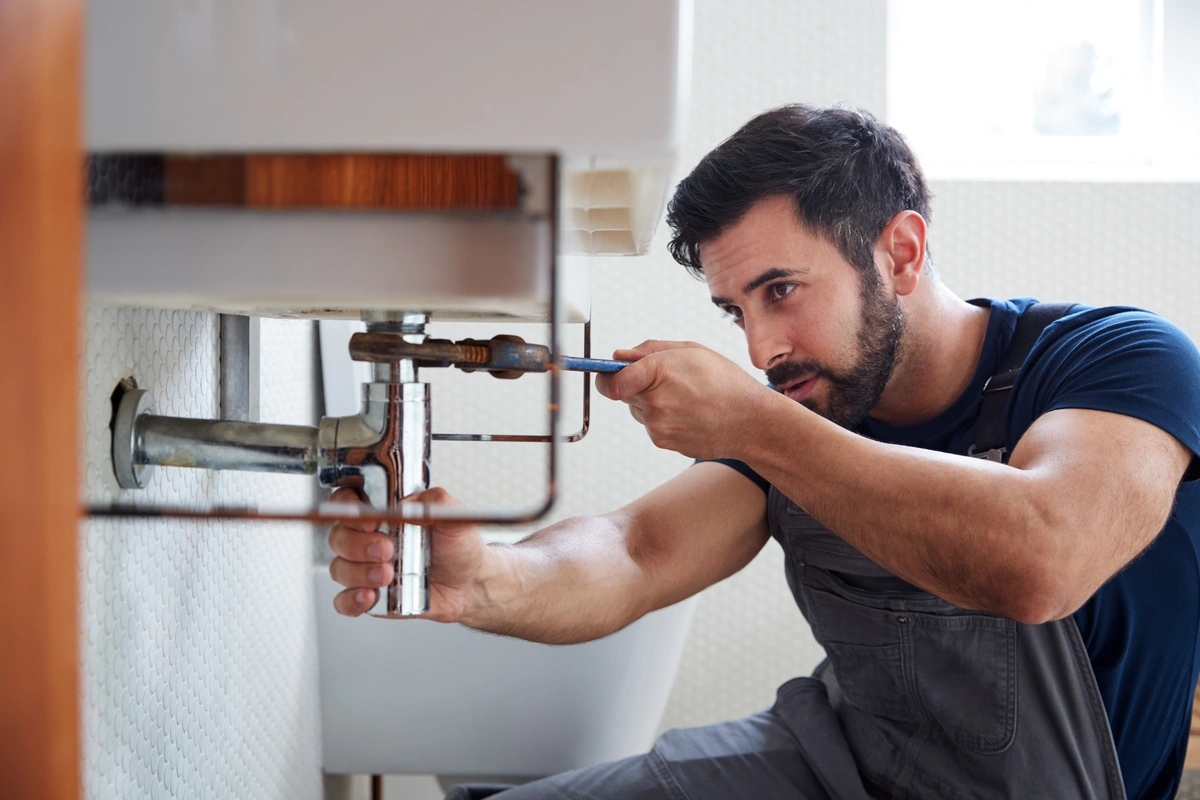Under sink plumbing might not be the most glamorous part of your home, but it’s essential for a functioning kitchen or bathroom. Whether you’re dealing with a clogged drain, a leaking pipe, or planning a renovation, understanding how under sink plumbing works can save you time and money.
In this guide, we’ll break down the components, common issues, and step-by-step instructions for troubleshooting and installing under sink plumbing.
Components of Under Sink Plumbing
To get started, let’s take a closer look at the key components of under sink plumbing:
- Faucet Supply Lines: These flexible hoses connect the hot and cold water supply to your faucet.
- P-Trap: The P-trap is a U-shaped pipe that holds water to prevent sewer gases from entering your home.
- Drain Pipes: These pipes carry wastewater from the sink to the main drainage system.
- Shut-Off Valves: Located under the sink, these valves control the water supply and allow you to turn off water to the faucet without shutting off the main water supply.
- Garbage Disposal (Optional): Found under kitchen sinks, garbage disposals grind food waste for easy drainage.
- Dishwasher Connection (Optional): A small hose connects the dishwasher to the sink’s plumbing system, usually at the garbage disposal or drain pipe.
Common Under Sink Plumbing Issues
Even the best plumbing systems encounter problems. Here are some common under sink plumbing issues and their causes:
-
Clogged Drains
- Cause: Hair, grease, food particles, and soap scum build up over time.
- Symptoms: Slow draining water or complete blockage.
-
Leaking Pipes
- Cause: Loose connections, worn-out seals, or cracked pipes.
- Symptoms: Water pooling under the sink or visible drips.
-
Faucet Leaks
- Cause: Worn-out washers, O-rings, or corroded components.
- Symptoms: Water leaking around the faucet base or handles.
-
Low Water Pressure
- Cause: Clogged aerator, faulty shut-off valve, or supply line issues.
- Symptoms: Weak water flow from the faucet.
-
Odors
- Cause: Debris in the P-trap or bacteria buildup.
- Symptoms: Foul smells emanating from the sink drain.
How to Fix Common Under Sink Plumbing Issues
Let’s dive into some step-by-step solutions for these common problems.
1. Fixing a Clogged Drain
Materials Needed: Plunger, plumbing snake, bucket, baking soda, vinegar
-
Use a Plunger:
- Place the plunger over the sink drain and push down firmly to create suction.
- Repeat several times to dislodge the clog.
-
Try a Baking Soda and Vinegar Solution:
- Pour half a cup of baking soda followed by half a cup of vinegar down the drain.
- Let it fizz for 15-30 minutes, then flush with hot water.
-
Disassemble the P-Trap:
- Place a bucket under the P-trap to catch any water.
- Loosen the slip nuts and remove the trap. Clean out debris and reassemble.
2. Fixing a Leaking Pipe
Materials Needed: Wrench, plumber’s tape, replacement washers or seals
-
Identify the Leak:
- Turn on the faucet and observe where water is dripping.
-
Tighten Connections:
- Use a wrench to tighten any loose slip nuts or connections.
-
Replace Worn-Out Washers:
- Disassemble the connection and replace old washers with new ones.
-
Use Plumber’s Tape:
- Wrap plumber’s tape around threaded connections to ensure a tight seal.
3. Fixing a Faucet Leak
Materials Needed: Screwdriver, wrench, replacement O-rings or washers
-
Turn Off the Water Supply:
- Shut off the valves under the sink.
-
Disassemble the Faucet:
- Remove the handles and faucet components using a screwdriver or wrench.
-
Replace O-Rings or Washers:
- Inspect for wear and replace any damaged parts.
-
Reassemble and Test:
- Put the faucet back together and turn on the water to check for leaks.
4. Fixing Low Water Pressure
Materials Needed: Wrench, needle or pin, replacement aerator (if needed)
-
Clean the Aerator:
- Unscrew the aerator from the faucet and clean out debris with a needle or brush.
- If damaged, replace with a new aerator.
-
Inspect the Shut-Off Valve:
- Ensure the valve under the sink is fully open.
-
Check the Supply Line:
- Inspect the supply line for kinks or blockages and replace if necessary.
How to Install Under Sink Plumbing
If you’re remodeling or installing a new sink, follow these steps to set up under sink plumbing.
Step 1: Install the Faucet and Supply Lines
- Attach the Faucet:
- Position the faucet in the sink’s mounting hole and secure it with the provided hardware.
- Connect Supply Lines:
- Attach flexible supply lines to the faucet’s hot and cold inlets.
Step 2: Install the Drain Assembly
- Apply Plumber’s Putty:
- Roll plumber’s putty around the underside of the drain flange and insert it into the sink drain hole.
- Secure the Drain:
- From underneath, attach the rubber gasket and nut to secure the drain in place.
Step 3: Connect the P-Trap and Drain Pipes
- Attach the Tailpiece:
- Connect the tailpiece (vertical pipe) to the drain flange.
- Install the P-Trap:
- Connect the P-trap to the tailpiece and the drain pipe leading to the wall. Secure with slip nuts.
Step 4: Test for Leaks
- Turn On the Water Supply:
- Open the shut-off valves and run water through the sink.
- Check for Leaks:
- Inspect all connections for drips and tighten if necessary.
Preventive Maintenance Tips
Keep your under sink plumbing in top shape with these tips:
- Regular Cleaning:
- Clean the P-trap and drain monthly to prevent clogs.
- Avoid Harsh Chemicals:
- Use natural solutions like baking soda and vinegar instead of chemical drain cleaners.
- Inspect for Leaks:
- Periodically check for signs of leaks or corrosion.
- Use a Strainer:
- Install a sink strainer to catch food particles and debris.
Conclusion: Under Sink Plumbing
Understanding under sink plumbing empowers you to handle common issues and even tackle installations with confidence. From fixing clogs and leaks to installing a new system, these skills can save you money and prevent future plumbing headaches.
With regular maintenance and a bit of know-how, your under sink plumbing will remain in excellent condition for years to come.





